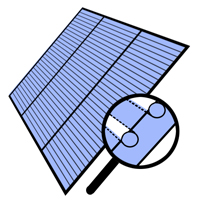 Enlarge |
How can electromagnetic radiation not successfully caught by a solar cell and radiation converted into thermal energy be useful to a solar cell? My concept in early development, known as the Solar Sheath, is to introduce a means of thermal energy transfer from a metallic material using round nanotubes made from a thermally conductive conduit such as polyphenylene sulfide through which the interior carries a flowing medium. The medium could be helium, sulfur hexafluoride or a liquid such as water used to carry the thermal energy from the metallic material sandwiched between two nanotubes.
Data collected from the Phase 1 study indicate that being able to remove thermal energy from the solar cell actually improves the electrical output of the solar cell. |
| The second part of the Solar Sheath, to address radiation that passes through the solar cell material unabsorbed, involves having the same nanotubes spiral wound with a conductor such as copper (metallic material) to absorb a portion of that free-flowing radiation which would be transformed into additional electricity as that radiation interacts with it. |  Enlarge |
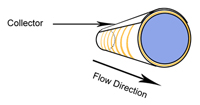 Enlarge |
Placement of the nanotubes within the solar cell replaces the traditional negative collector plates positioned on top of the solar cell after an arched collector strip is added to the nanotubes. |
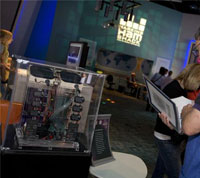 Photo: Courtesy UAT Digital Daze On Exhibit at Science Center |
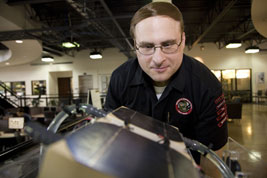 Photo: Courtesy UAT Innovator with Project |
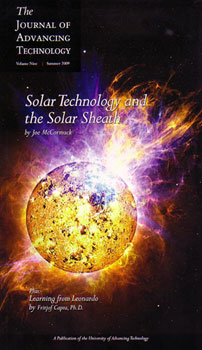 Academic publication regarding the Solar Sheath |
 Photo: Courtesy Geek411 Solar Sheath & Quantum Tech |
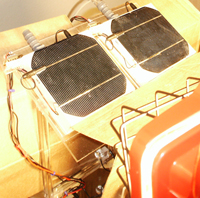 Enlarge 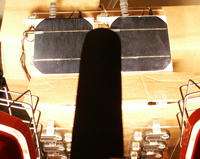 Enlarge Photos: 1000 Watt Flood Test |
In order to determine the thermal conduction properties of the PPS (polyphenylene sulfide) material in a setting where it is used in conjunction with a solar cell to be ultimately used as the thermal conduit for the metallic material sheathed in the nanotubes, a prototype (Phase 1) was constructed to measure the thermal transfer ratios from the solar cell, to the PPS material and finally to a closed fluid circulatory system with a heat dissipating reservoir. As a control set, an isolated solar cell and PPS material base along with an isolated reservoir were also setup so thermal properties could be compared.
Legend: M1 - Thermometer #1 measuring thermal activity (Fahrenheit) of isolated fluid reservoir #1. M2 - Thermometer #2 measuring thermal activity (Fahrenheit) of isolated PPS material. M3 - Thermometer #3 measuring surface thermal activity (Fahrenheit) of isolated solar cell. D1 - Digital Multimeter measuring volts generated by isolated solar cell. M4 - Thermometer #4 measuring thermal activity (Fahrenheit) of heat dissipating fluid reservoir #2 circulating fluid through PPS material. M5 - Thermometer #5 measuring thermal activity (Fahrenheit) of PPS material with circulating fluid. M6 - Thermometer #6 measuring surface thermal activity (Fahrenheit) of solar cell mounted on PPS material with circulating fluid. D2 - Digital Multimeter measuring volts generated by solar cell mounted on PPS material with circulating fluid. After the 1000 Watt halogen light system (Utilitech Model# WL500RDPT-L) was put in place and operational indoors for 45 minutes, approximately six inches from the solar cells, periodic measurements were recorded at 15 minute intervals as shown in the chart below.
In the circulating system, it can be seen that approximately 17 degrees Fahrenheit (M3 - M6) of thermal difference from the solar cell to the PPS material (the difference between M2 and M5 also demonstrate this common attribute, where M2 and M5 are the thermal measurements within the PPS material itself). The isolated fluid reservoir (M1) over the course of the measurement period rose approximately six degrees Fahrenheit whereas the closed system circulating fluid heat dissipating reservoir (M4) rose approximately eight degrees Fahrenheit. This indicates that M4 was not able to dissipate approximately two degrees Fahrenheit of thermal capacity introduced to it in order to remain at "ambient" temperature (M1) over the course of the measuring period lasting four and one-quarter hours. However, through M1 - M4 it can be observed that M4 was approximately seven degrees Fahrenheit warmer than the isolated, non-circulating reservoir M1. Side Note: Based on M6 and D2 in the circulating system and M3 and D1 in the isolated system, it is interesting to observe that for each degree Fahrenheit increase, a voltage loss of approximately .001V occurs at the solar cell. |
|||||||||||||||||||||||||||||||||||||||||||||||||||||||||||||||||||||||||||||||||||||||||||||||||||||||||||||||||||||||||||||||||||||||||||||||||||||||||||||||||||
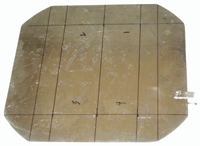 Enlarge 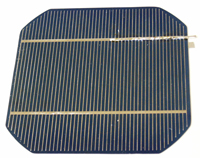 Enlarge |
Soldering of tin wire to solar cell. |
 Enlarge |
Splicing digital thermostat with a DC power cable. |
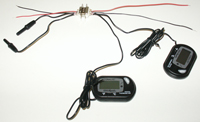 Enlarge |
Splicing two digital thermostats with 9-pin DIN male and female connectors and wiring for solar cell and digital multimeter. |
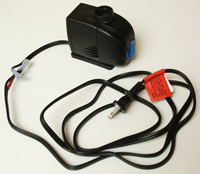 Enlarge |
Splicing AC cord of the flow pump with a barrel connector and two female blade connectors. |
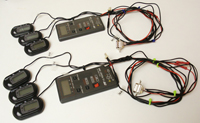 Enlarge |
Labeling of individual wires and bundling together. |
 Enlarge |
Creating the mount for the solar cell assemblies. |
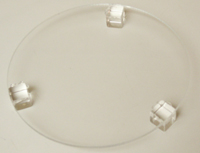 Enlarge |
Creating the base of the two reservoirs. |
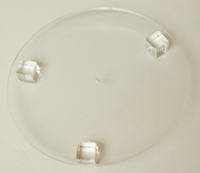 Enlarge |
Creating the caps of the two reservoirs with a pressure equalizing center hole. |
 Enlarge 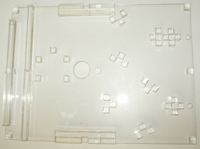 Enlarge |
Creating the mount base plate for all components. |
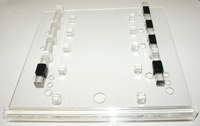 Enlarge 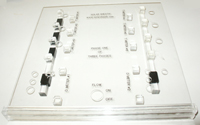 Enlarge |
Creating the instrument face plate and labeling for individual components. |
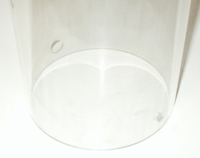 Enlarge |
Forming the drain and sensor holes for the first reservoir. |
 Enlarge |
Forming the flow inlet, outlet, drain and sensor holes for the second reservoir. |
 Enlarge 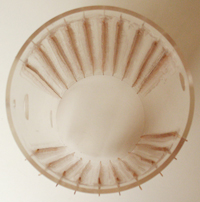 Enlarge |
Cutting 20, 10 inch long guides through the second reservoir, sliding copper strands into them and sealing (from the inside) the strands with silicon sealant. |
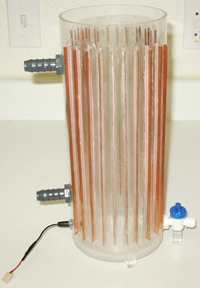 Enlarge |
Attaching and sealing the inlet, outlet, drain and sensors to the second reservoir. |
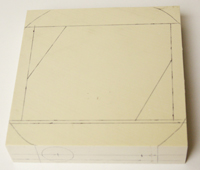 Enlarge |
Drawing guides on the PPS material for routing out the flow cavity. |
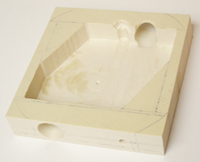 Enlarge 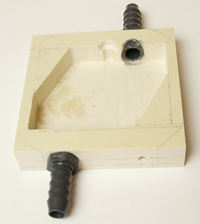 Enlarge |
Routing out the flow cavity and sealing the inlet and outlets as well as drilling shafts for sensors. |
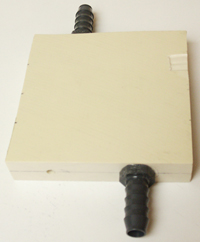 Enlarge |
Removing a slot from the PPS material for the positive solar cell tin wire (to ensure the solar cell will be flat against the PPS material). |
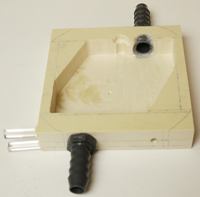 Enlarge |
Adding two acrylic bars to the PPS material for the 9-pin female connector to be mounted between. |
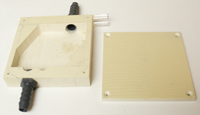 Enlarge |
Drilling four holes in the PPS material so they may be joined together with screws. |
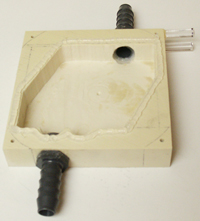 Enlarge 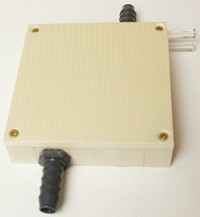 Enlarge |
Placing aquarium sealant along the perimeter of the flow cavity and then joining the two PPS components together. |
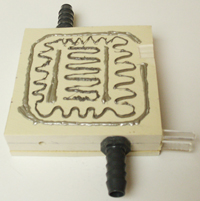 Enlarge 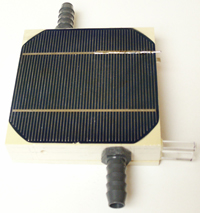 Enlarge |
Adding silver-based conduction paste to PPS material with a perimeter comprised of part 1 and part 2 conduction paste. Following that, placing the solar cell on top and allowing to set. |
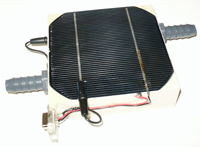 Enlarge |
Soldering solar cell wiring, gluing sensors and wiring into place. |
 Enlarge |
Placing the base plate to mount components. |
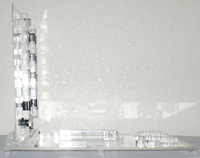 Enlarge |
Mounting the instrument plate into place by sliding along the guides. |
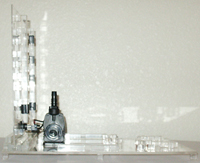 Enlarge |
Mounting the flow pump. |
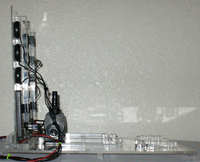 Enlarge |
Mounting the instruments into prepared areas of the instrument plate. |
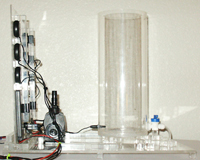 Enlarge |
Mounting the first reservoir and connecting the sensor. |
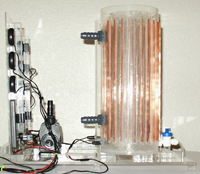 Enlarge |
Mounting the second reservoir and connecting the sensor. |
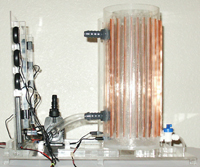 Enlarge |
Adding 1/2 inch clear tubing between the flow pump inlet and the lower tube connector of the second reservoir. |
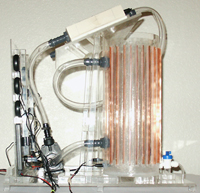 Enlarge |
Adding 1/2 inch clear tubing between the flow pump outlet and the tube connector of the solar cell assembly and then adding tubing between the remaining solar cell assembly tube connector and the upper tube connector of the second reservoir after the solar cell assemblies have been seated on the solar cell assembly mount. |
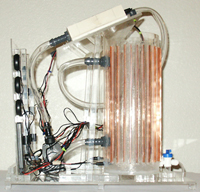 Enlarge |
Connecting the bundles of wire to each solar cell assembly. |
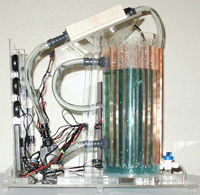 Enlarge |
Adding fluid to the reservoirs and placing the reservoir caps on top of the reservoirs. |